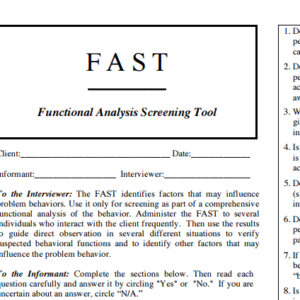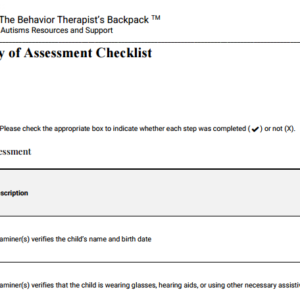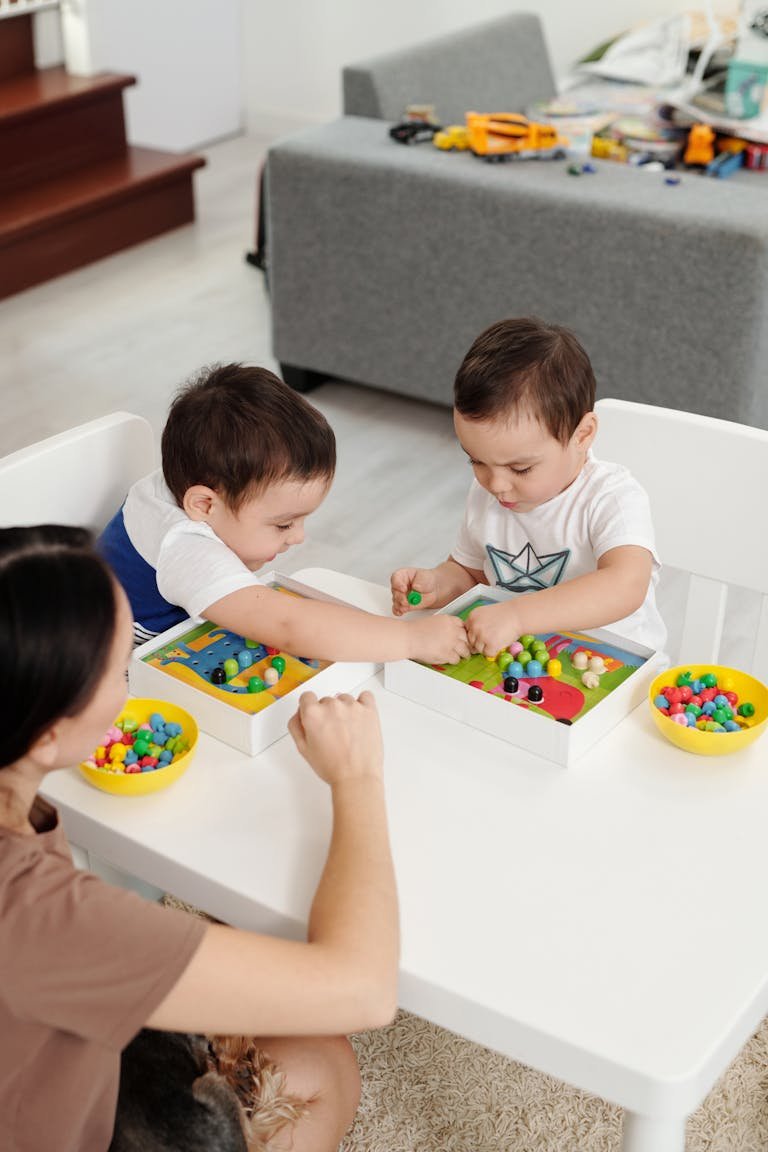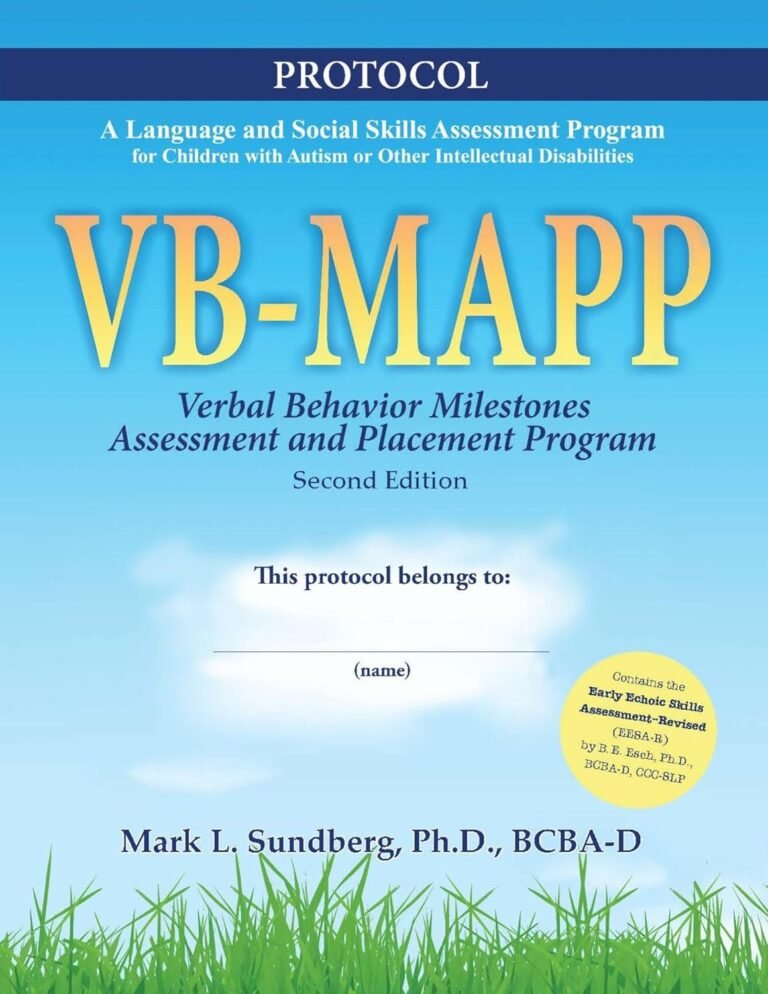
If you’re a parent or therapist supporting an amazing autistic child, you know that alongside the incredible joys and unique perspectives, there can sometimes be challenging behaviors that leave you feeling exhausted, confused, or overwhelmed. Meltdowns, shutdowns, defiance, aggression – these moments can be tough, not just for the child, but for everyone involved.
But what if I told you that often, these challenging behaviors don’t just appear out of thin air? What if there’s a predictable pattern, a kind of wave or a path leading up a hill? Understanding this pattern can be a game-changer, empowering us to respond more effectively, proactively, and compassionately.
Researchers Geoff Colvin and George Sugai described this pattern as the Stages of Behavior Escalation (You can read more at: Managing the Cycle of Acting-Out Behavior in the Classroom).
Think of it as a roadmap. Knowing where you are on the map helps you choose the best route forward – ideally, one that leads back to calm before reaching the peak.
Let’s walk through these stages together, focusing on what they look like and how we can help guide our kids (and ourselves!) through them.
Stage 1: Calm
This is home base. Your child is relaxed, cooperative, maybe playing happily or engaging in therapy tasks. They’re responsive and generally regulated.
- What to Do: Treasure this stage! This is where the magic of prevention happens.
- Connect: Pour in positive attention, praise genuine effort, and enjoy quality time together. Build that relationship bank!
- Teach: This is the prime time to proactively teach and practice essential skills: coping strategies for frustration, ways to communicate needs (verbal or non-verbal), understanding social cues, and self-regulation techniques. For autistic kids, this might involve visual schedules, social stories, or practicing with communication devices.
- Structure: Maintain predictable routines and clear expectations – these often provide comfort and security.
Stage 2: Trigger
Something happens. It might be obvious (like being asked to stop a preferred activity) or subtle (like internal discomfort, sensory overload from flickering lights, or confusion about expectations). This “trigger” sparks the potential for escalation. You might notice small changes like restlessness or a shift in focus.
Explore related products
- What to Do: Be a detective and act early!
- Identify: Know your child’s common triggers. Is it transitions? Unexpected changes? Sensory sensitivities? Communication frustration? Keeping a simple log can help reveal patterns.
- Support: Offer preemptive help. Give warnings before transitions (“5 more minutes with the tablet, then it’s time for dinner”). Break down challenging tasks.
- Adapt: If possible and appropriate, remove or lessen the trigger. Offer choices (“Do you want to wear the red shirt or the blue shirt?”) to give a sense of control.
- Redirect: Gently guide them towards a preferred or calming activity. Stay calm yourself!
Stage 3: Agitation
The engine is revving. You’ll see more noticeable signs of distress or anxiety – fidgeting, pacing, withdrawing, maybe some unfocused repetitive movements or sounds. They’re clearly becoming more uncomfortable or frustrated, but not yet “acting out” directly towards someone.
- What to Do: Lower the temperature, not raise the stakes.
- Space: Give them physical and mental space. Reduce demands and environmental clutter (noise, visual distractions).
- Validate & Listen: Use a calm, quiet voice. Acknowledge their feelings without judgment (“I see this is really hard for you right now”). Sometimes just feeling heard can help.
- Offer Support: Suggest a break, a calming tool (like a fidget or weighted lap pad), or a quiet corner. Avoid excessive talking or questioning.
Stage 4: Acceleration
Now the behavior becomes more focused and challenging, often drawing you in. Think arguing, yelling, refusing point-blank, maybe minor provocative acts like throwing something gently or making threats. It feels like they’re trying to pull you into a conflict.
- What to Do: Stay anchored and don’t take the bait! Safety becomes a key focus.
- Avoid Power Struggles: This is crucial. Arguing or lengthy lectures now will likely fuel the fire.
- Set Limits Calmly & Briefly: State expectations or consequences clearly, concisely, and neutrally (using pre-planned “If… then…” statements if appropriate). “Walk with me, please.” or “If you choose to keep yelling, you choose to lose game time later.”
- Disengage: Withdraw attention from the challenging behavior itself (if safe to do so). Give space. Your calm presence is more powerful than angry words. Focus on de-escalation, not winning.
Stage 5: Peak
This is the full-blown crisis – the meltdown, aggression (hitting, kicking, biting), self-injury, or significant destruction. The child is overwhelmed, often irrational, and safety is the absolute priority.
- What to Do: Safety first, communication minimal.
- Ensure Safety: Protect yourself, the child, and anyone else nearby. Remove dangerous objects. Guide the child to a safer space if possible without force that could escalate things further.
- Minimize Interaction: Use very few words, focused only on safety if needed (“Hands down”). Your calm, non-threatening presence is key. Don’t try to reason or teach.
- Get Help if Needed: Don’t hesitate to call for backup from another adult or emergency services if safety is seriously at risk.
Stage 6: De-escalation
The storm begins to pass. The intensity drops. The child might be exhausted, confused, tearful, withdrawn, or even deny what happened. They are still very fragile emotionally.
- What to Do: Allow a soft landing.
- Quiet & Space: Let them recover without pressure. Avoid immediate questioning or lecturing (“I told you so!”).
- Simple Comforts: Offer water or a tissue if they seem receptive.
- Patience: Give them ample time to fully cool down before trying to talk about what happened.
Stage 7: Recovery
They’re back. More rational, maybe subdued or apologetic, maybe defensive. They are generally able to engage again, although they might be tired or wary.
- What to Do: Reconnect, Reflect (briefly), and Return to routine.
- Reconnect: Focus on restoring the relationship. Offer reassurance.
- Implement Consequences Calmly: If a consequence was stated earlier, follow through calmly and logically.
- Briefly Problem-Solve: When ready, talk simply about what happened. Focus on the behavior and choices, not labeling the child. “When [trigger] happened, you felt [emotion], and you chose to [behavior]. Next time, what’s a safer/calmer choice we could practice?” Review or practice a coping strategy.
- Return to Routine: Get back to the normal schedule as soon as possible to restore predictability.
The Big Picture
Understanding these stages isn’t about blaming the child (or yourself!). It’s about recognizing patterns and empowering ourselves with knowledge.
- Prevention is Powerful: Investing time in the Calm stage pays huge dividends.
- Early Intervention Works: Catching things at the Trigger or Agitation stage is far easier than dealing with the Peak.
- Stay Calm Yourself: Our kids co-regulate with us. Our calm helps them find theirs.
- Consistency & Collaboration: Parents and therapists working together with consistent strategies make a huge difference.
- Safety Matters Most: During Acceleration and Peak, safety overrides everything else.
Navigating challenging behaviors is a journey, not a destination. By understanding the escalation cycle, we can become more confident, compassionate, and effective guides for the incredible autistic children we support. You’ve got this!
(Disclaimer: This post provides general information based on the Colvin & Sugai model. Always consult with qualified professionals for individualized advice and support tailored to your specific situation. As an Amazon Associate, the therapist earn from qualifying purchases on Amazon.com)












